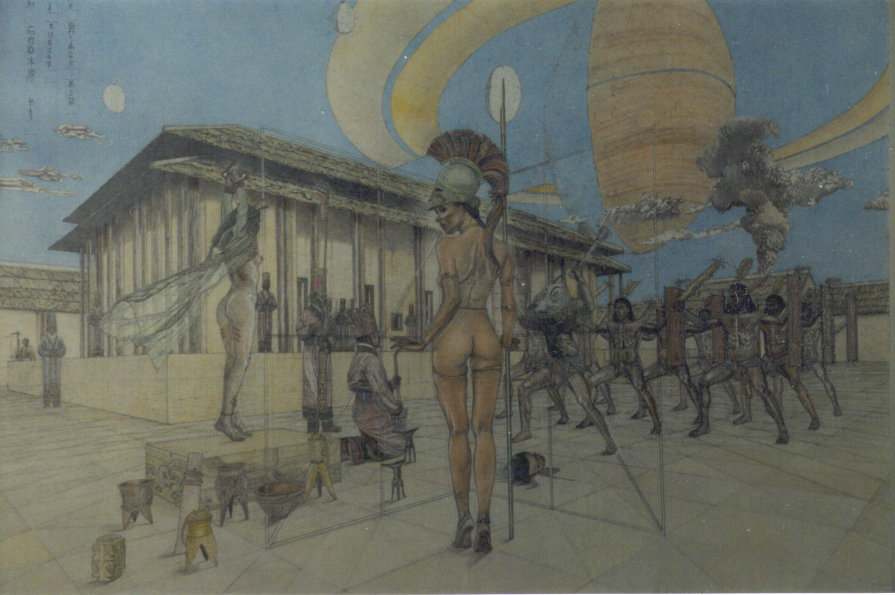
|
Data: 32 x 40 inch. Jan 2000 to Nov. 2000. 271 hours spent working. Yu (c. 2000 B.C.) was the legendary figure in early Chinese history who was famous for controlling the flood. The story depicted here was rather an obscure deed of his: Shun, the leader of the tribal confederacy in north central China in which Yu had a prominent role, ordered him to attack the Miao tribes on the east. After three defeats Yu had his soldiers dance shamanistically, the shield in one of their hands and the feathers in the other. After three months of such dances the Miao gave up and pledged allegiance to Shun's tribal confederacy. Yu was to found the Hsia dynasty later -- the first dynasty in Chinese history but in fact another of the series of tribal confederacies that make up the earliest portion of Chinese history. The palatial complex that forms the background here is a reconstruction of the well known Er-li-tou archaeological site, usually identified as corresponding to the Hsia "dynasty." The dresses of the Hsia officials are inferred from those of Shang. Items of ELT type were littered near the platform of the shamanness in green dress. Again, Goddess Athena is seen appearing in the midst of the enemy-subduing shamanistic dances. Here Goddess Athena simply observes the historical happening. The idea of a witness always intrigues me: to think that the chain of achievements or follies of these little human beings on a planet always has a divine observer watching, objectively and without judgment. She does not weep over their follies and cruelties and is never impressed by their self-proclaimed ingenuities and self-delegated privileges based on these ingenuities. She simply observes, like a mother does her immature infant. |
| The Main View 1 | | View 2 | | Close Ups 1 | | The Making of This Piece | | Return to the Main Gallery |